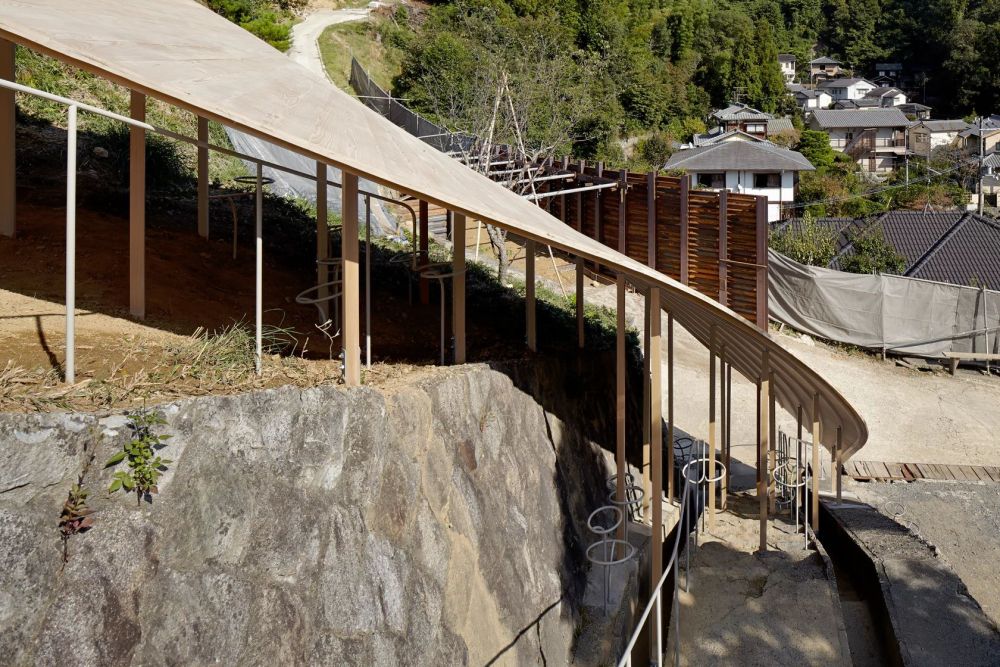京都艺术设计大学校园内的这个小亭子代表与SANAAA的建筑师Ryis Nishawa和Nendo的设计室合作。位置:一个陡峭的山丘覆盖着豪华的植被。在晴朗的日子里,几乎可以算出京都东部边缘的山峰的36个山峰。相邻区域是
专门用于日本梅花树的新树林,而其早春的春花只会增加一个已经漂亮的地盘。西泽用单屋顶将这些元素融入亭子的设计中。
屋顶倾向于跟随现场的角度。浸在它下面,游客意识到,屋顶,令人愉快和模糊,也是一堵墙。亭子的空间体验旨在提醒游客在树丛下厚厚的山脉散步。到目前为止,许多西泽的建筑都感觉像明亮,开放,通风的田野或花园,
而其中的家具就像野花,模糊了内部和外部空间之间的界限,同时增加了亮度和颜色。但是,对于这个木质结构的阴暗内部,紧贴在暴露于元素的山坡上,我们认为像真菌这样的家具会更加合适。我们的蘑菇般的凳子,由工匠手工制作,略有不同的形状和大小,给人以更自然的效果。凳子的布局集中在一起在柱子的基地,或在石墙和楼梯的角落和角落里,唤起了蘑菇生长的方式在野外,像扶手一样变成蘑菇的细节继续隐喻。我们想设计建筑元素将自然地从空间“成长”,而不是把家具放在房间里。
This small pavilion on the campus of Kyoto University of Art and Design represents a collaboration with architect Ryue Nishizawa of SANAAA and design office, Nendo. The location: a steep hill face covered in luxurious vegetation. On a clear day, you can almost count the 36 crests of the hills that line Kyoto’s eastern edge. The adjacent area is
earmarked for a new grove of Japanese plum trees, and their fragrant early spring blossoms will only add to an already beautiful site. Nishizawa used a single roof to incorporate these elements into the pavilion’s design.
The roof is subtly inclined to follow the angle of the site. Dipping under it, visitors realize that the roof, delightfully and ambiguously, is also a wall. The pavilion’s spatial experience is intended to remind visitors of walking in the mountains under a thick tree cover. To date, many of Nishizawa’s buildings have felt like bright, open, and airy fields or gardens,
and the furniture inside them like wildflowers that blur the boundary between interior and exterior space, while adding brightness and color. But for the shady interior of this wooden structure, clinging onto the hillside exposed to the elements, we thought that furniture like fungi would be much more appropriate. Our mushroom-like stools for the space were handmade by artisans to slightly different shapes and sizes, giving a more natural effect. The stools’ layout—clustered
at the base of pillars, or in the nooks and crannies by stone walls and staircases—evokes the way that mushrooms grow
in the wild, and details like a handrail that transforms into a mushroom continue the metaphor. We wanted to design
architectural elements that would “grow” naturally from the space, rather than to put furniture in a room.
































